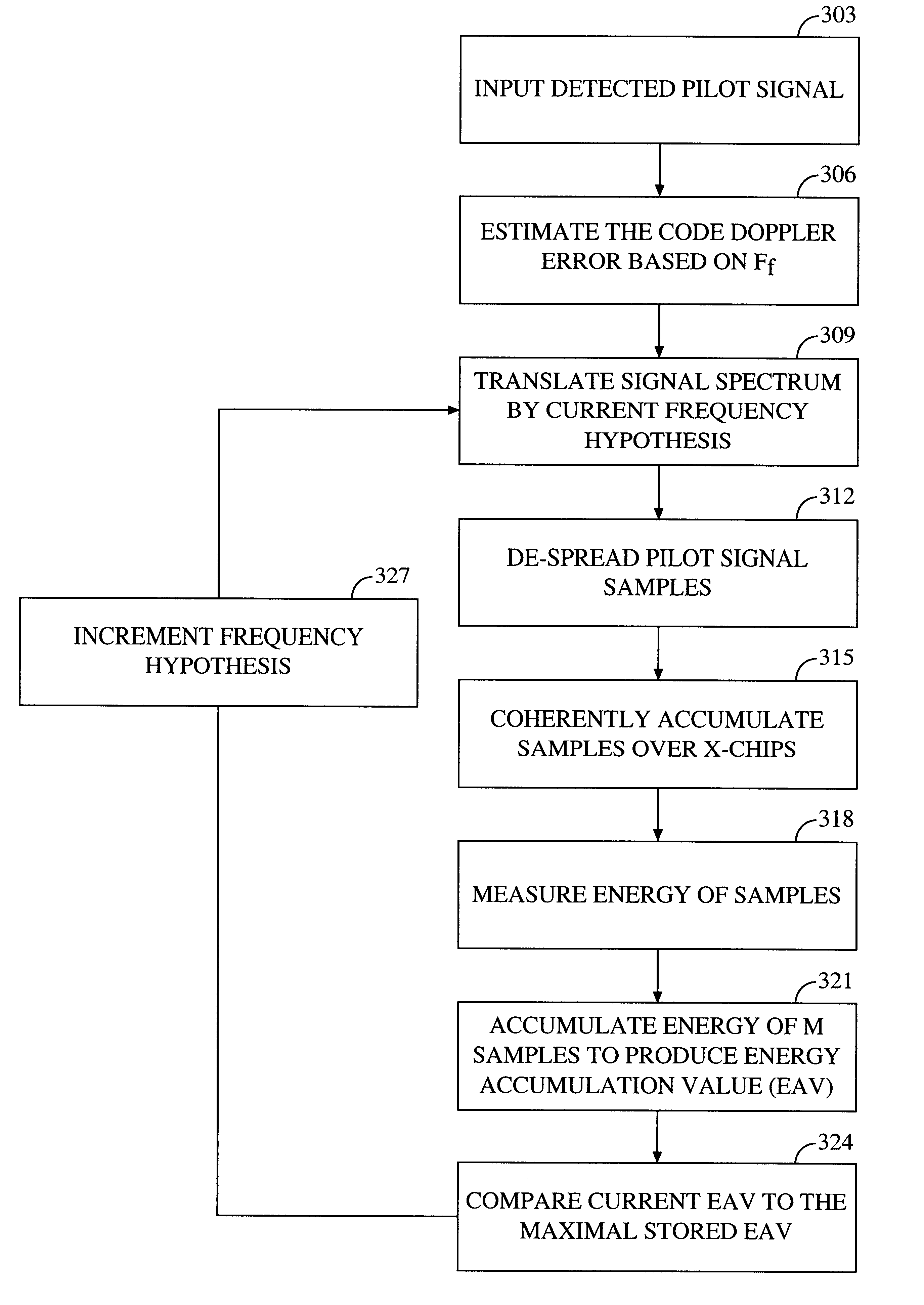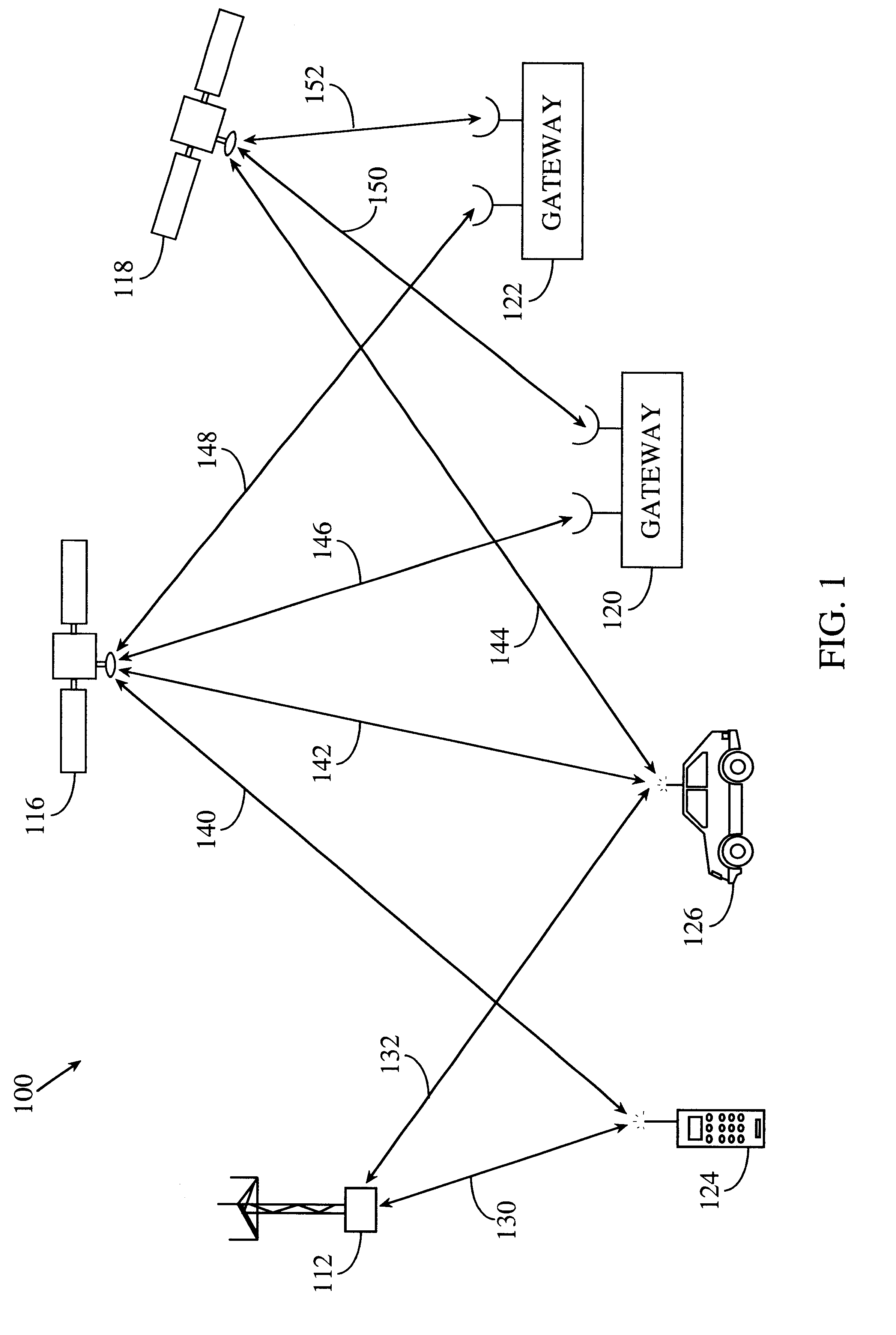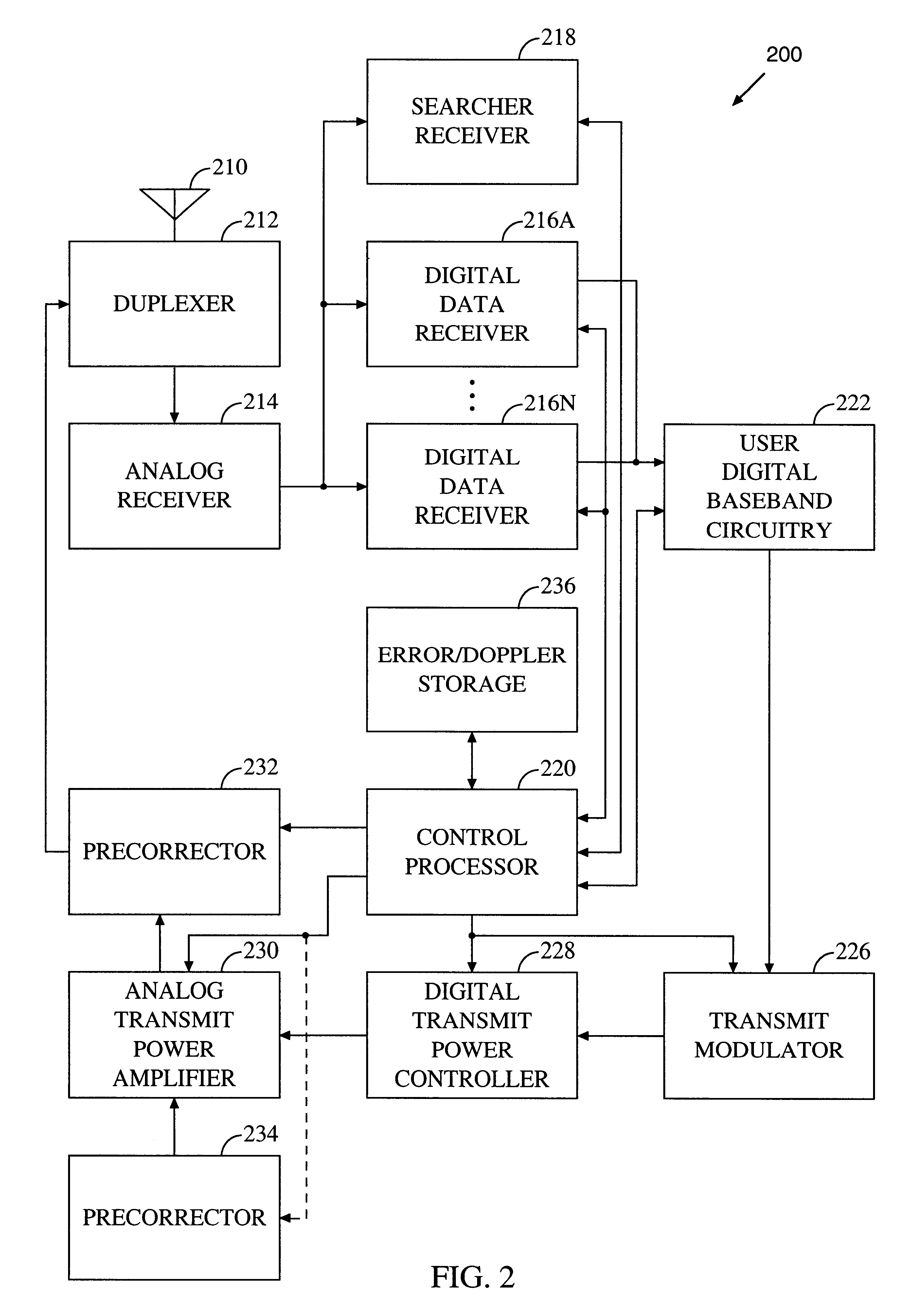System and method for narrowing the range of frequency uncertainty of a doppler shifted signal
a technology of doppler shift and frequency uncertainty, applied in the field of wireless communication systems, can solve the problems of unacceptably increasing the cost of the user terminal, no local oscillator is perfect, and local oscillator fabrication is very expensive, so as to reduce the magnitude of overall timing error and reduce the effect of code doppler error
- Summary
- Abstract
- Description
- Claims
- Application Information
AI Technical Summary
Benefits of technology
Problems solved by technology
Method used
Image
Examples
Embodiment Construction
Description
FIG. 3 is an operational flow diagram illustrating the operation of the present invention in performing a fine frequency search. The invention will be described in the environment of a spread spectrum satellite cellular communications system, where the satellites are in low earth orbit(LEO) and have large radial velocities relative to the user terminals. However, those skilled in the art will recognize how this approach can also be applied to signals transferred by base stations without using satellites. That is, where there is sufficient signal source / receiver motion to generate Doppler frequency shifts of concern. For example, when using other types of moving repeaters or a fast moving vehicle such as a high speed train.
In a step 303, a detected spread spectrum pilot signal is submitted for processing by searcher receiver 218. The pilot signal is down-converted from the received RF band by analog receiver 214 to baseband where it is A / D converted. If the incoming signal...
PUM
 Login to View More
Login to View More Abstract
Description
Claims
Application Information
 Login to View More
Login to View More - R&D
- Intellectual Property
- Life Sciences
- Materials
- Tech Scout
- Unparalleled Data Quality
- Higher Quality Content
- 60% Fewer Hallucinations
Browse by: Latest US Patents, China's latest patents, Technical Efficacy Thesaurus, Application Domain, Technology Topic, Popular Technical Reports.
© 2025 PatSnap. All rights reserved.Legal|Privacy policy|Modern Slavery Act Transparency Statement|Sitemap|About US| Contact US: help@patsnap.com



